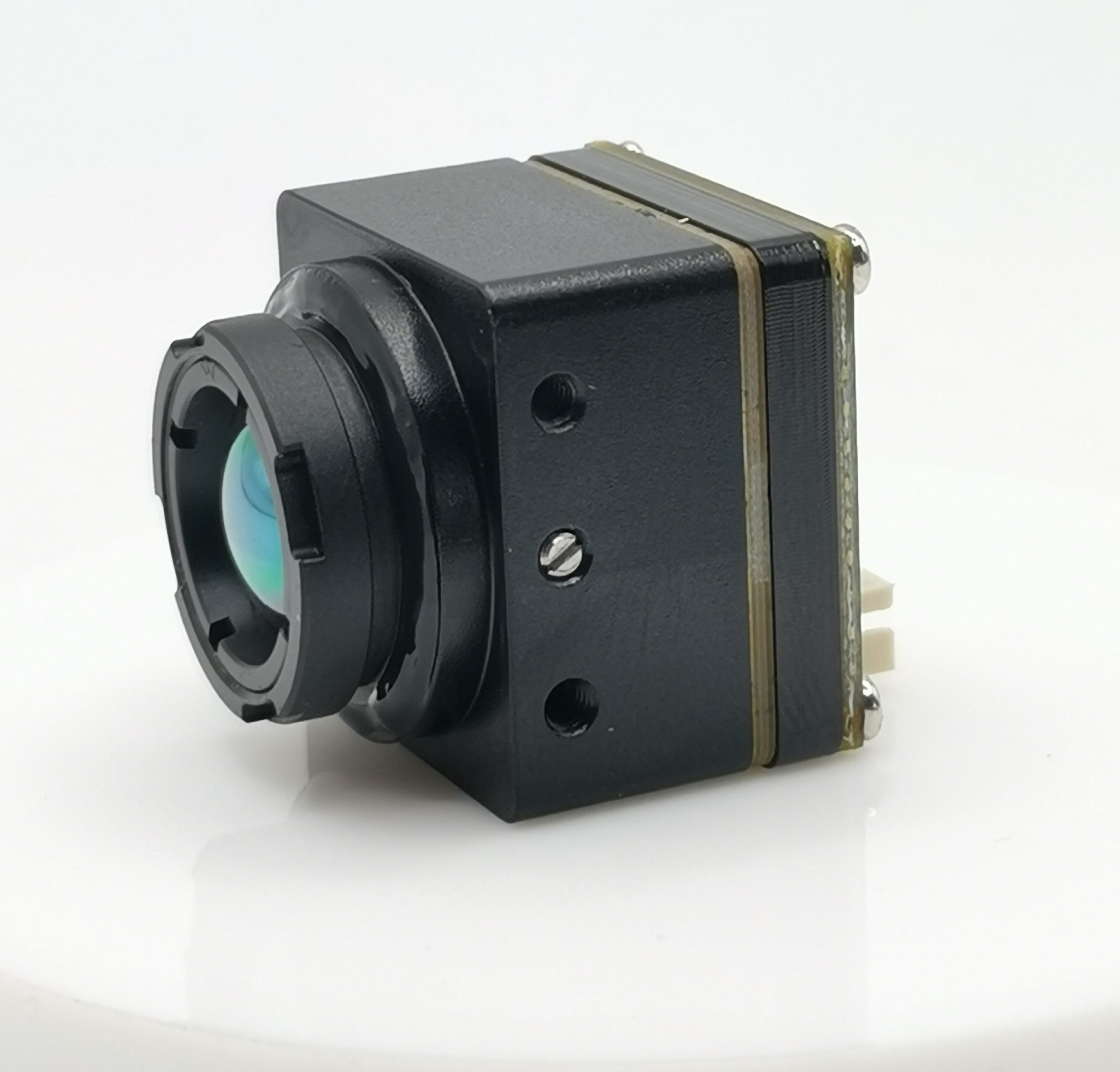Low Cost Thermal Camera for Drone vs. iSun Analog FPV Thermal Camera: A Comprehensive Comparison

Exploring the Basics of Thermal Imaging in Drones
Thermal imaging technology has revolutionized the capabilities of drones, allowing them to capture crucial data and imagery beyond the scope of traditional cameras. Understanding the fundamentals of thermal imaging is essential for comprehending its significance in drone applications.
Understanding Thermal Imaging Technology
How Thermal Cameras Work
Thermal cameras operate by detecting the heat emitted by objects and translating it into visible images. This is achieved through the use of specialized sensors that can detect infrared radiation, which is then processed to create a thermal image. By capturing temperature variances, thermal cameras can produce detailed visuals that are invaluable for various purposes.
Applications of Thermal Imaging in Drones
The integration of thermal imaging in drones has unlocked a myriad of applications across industries. From search and rescue operations to infrastructure inspections, thermal imaging enables drones to identify heat signatures and anomalies that may be invisible to the naked eye. Additionally, it plays a pivotal role in environmental monitoring, wildlife conservation, and agricultural assessments.
The Role of FPV Thermal Cameras in Modern Drones
Enhancing Visibility and Safety
FPV thermal cameras offer real-time visibility in challenging environments, empowering drone operators with enhanced situational awareness. By leveraging FPV thermal cameras, operators can navigate through low-light conditions, dense foliage, or hazardous terrains with confidence, thereby mitigating risks and ensuring safe operations.
Diverse Applications Across Industries
The versatility of FPV thermal cameras extends across diverse industries such as public safety, construction, and energy. Whether it's locating missing persons during nighttime searches or identifying structural defects in buildings, FPV thermal cameras have become indispensable tools for professionals seeking reliable and comprehensive insights.
Feature Comparison: Low Cost Thermal Camera for Drone vs. iSun Analog FPV Thermal Camera
As the demand for thermal imaging capabilities in drones continues to grow, it's essential to compare the key features and advantages of low-cost thermal cameras designed for drones with the advanced iSun analog FPV thermal camera.
Key Features of Low Cost Thermal Cameras for Drones
Basic Functionality and Limitations
Low-cost thermal cameras for drones typically offer fundamental thermal imaging functionality at an affordable price point. These cameras are designed to capture infrared radiation and translate it into visible images, providing operators with insights into temperature variations within their operational environment. However, due to cost constraints, these cameras may have limitations in terms of image resolution and advanced features.
Common Use Cases
The low cost thermal camera for drone serves various practical purposes across industries. It is commonly utilized for tasks such as building inspections, wildlife monitoring, and search operations. Additionally, it aids in identifying heat loss in buildings, detecting hotspots in electrical systems, and assessing agricultural crop health.
Advantages of the iSun Analog FPV Thermal Camera
Enhanced Features and Capabilities
The iSun analog FPV thermal camera stands out with its advanced features and capabilities that surpass those of low-cost alternatives. With higher resolution imaging and superior temperature sensitivity, this camera provides operators with detailed thermal data critical for precise decision-making. Additionally, it offers a wider range of color palettes and image enhancement options, enabling users to customize their thermal imaging experience according to specific requirements.
Unique Selling Points
One of the unique selling points of the iSun analog FPV thermal camera is its seamless integration with drone systems, offering real-time transmission of high-quality thermal imagery to ground stations or remote devices. Furthermore, its durable construction ensures reliable performance even in challenging environmental conditions, making it an ideal choice for professional applications that demand uncompromising quality.
Image Quality and Clarity: A Side-by-Side Analysis
Assessing Image Resolution and Clarity
When comparing the image resolution and clarity of thermal cameras designed for drones, it becomes evident that the iSun Analog FPV Thermal Camera excels in delivering high-quality thermal imagery. With its advanced technology, the iSun Analog FPV Thermal Camera offers exceptional image resolution, capturing detailed thermal data with precision. On the other hand, low-cost thermal cameras for drones may exhibit limitations in image resolution, resulting in less detailed thermal images.
In terms of clarity, the iSun Analog FPV Thermal Camera provides clear and sharp thermal visuals, allowing operators to discern temperature variations and anomalies with accuracy. Conversely, low-cost thermal cameras for drones may present slightly lower clarity in their thermal images, impacting the level of detail available for analysis.
Impact of Image Quality on Practical Applications
Real-World Scenarios
In real-world scenarios such as search and rescue missions or infrastructure inspections, image quality plays a pivotal role in ensuring effective decision-making. The superior image quality offered by the iSun Analog FPV Thermal Camera enables operators to identify heat signatures and potential hazards with enhanced clarity. This capability is particularly valuable when conducting operations in challenging environments or during critical missions where precision is paramount.
Conversely, the relatively lower image quality of low-cost thermal cameras for drones may pose challenges in accurately identifying subtle temperature variations or anomalies. While these cameras still provide valuable insights, their reduced image quality could limit their effectiveness in certain applications that demand higher levels of detail.
User Experiences and Feedback
User experiences and feedback regarding image quality often highlight the significance of investing in a high-quality thermal camera for drone operations. Operators utilizing the iSun Analog FPV Thermal Camera consistently report satisfaction with its superior image resolution and clarity. This positive feedback underscores the impact of high-quality imagery on operational efficiency and decision-making processes.
Conversely, users of low-cost thermal cameras for drones may encounter limitations related to image quality and clarity during their operations. Feedback often emphasizes the trade-offs between affordability and imaging capabilities, with some users expressing a need for higher resolution and clearer imagery to enhance their operational outcomes.
Durability and Reliability: What Stands the Test of Time?
As drone technology continues to evolve, the durability and reliability of thermal cameras play a crucial role in ensuring consistent performance and longevity. Comparing the build quality, durability, and reliability of low-cost thermal cameras for drones with the iSun Analog FPV Thermal Camera provides valuable insights into their suitability for diverse operational environments.
Comparing Build Quality and Durability
Low Cost Thermal Camera for Drone
Low-cost thermal cameras for drones are designed with lightweight materials to ensure minimal impact on the drone's overall weight and balance. While these cameras offer basic functionality at an affordable price point, their build quality may be susceptible to damage in rugged operating conditions. The use of plastic components and less robust construction may result in reduced durability, especially when subjected to frequent deployments in challenging terrains or harsh weather conditions.
iSun Analog FPV Thermal Camera
In contrast, the iSun Analog FPV Thermal Camera is engineered with a focus on robust build quality and durability. Constructed using high-quality materials such as reinforced polymers and aluminum alloys, this thermal camera exhibits superior resistance to impact and environmental stressors. Its rugged design ensures reliable performance even in demanding operational scenarios, making it a dependable choice for professional applications that demand uncompromising durability.
Reliability in Diverse Environmental Conditions
Performance Under Extreme Conditions
Low-cost thermal cameras for drones may face limitations in maintaining consistent performance under extreme environmental conditions. Factors such as temperature fluctuations, moisture exposure, and mechanical stress can impact the reliability of these cameras during critical operations. As a result, operators may encounter challenges related to image stability and overall system functionality when operating in harsh environments.
On the other hand, the iSun Analog FPV Thermal Camera demonstrates exceptional reliability across diverse environmental conditions. With its advanced sealing technologies and weather-resistant construction, this thermal camera excels in delivering consistent performance even in extreme temperatures, high humidity environments, or challenging terrain. Its ability to withstand environmental adversities enhances its suitability for prolonged missions and critical tasks where reliability is paramount.
Longevity and Maintenance Requirements
When considering longevity and maintenance requirements, low-cost thermal cameras for drones may exhibit shorter lifespans due to their limited durability and susceptibility to wear over time. Additionally, these cameras may necessitate more frequent maintenance interventions to address issues related to component degradation or environmental wear.
Conversely, the iSun Analog FPV Thermal Camera offers extended longevity with minimal maintenance requirements. Its durable construction minimizes the need for frequent repairs or replacements, contributing to lower lifecycle costs while ensuring uninterrupted operational readiness. This advantage positions the iSun Analog FPV Thermal Camera as a long-term investment that delivers sustained reliability without significant upkeep demands.
Making the Right Choice for Your Needs
After evaluating the features, image quality, and durability of low-cost thermal cameras for drones and the advanced iSun Analog FPV Thermal Camera, it becomes essential to consider the factors that influence the decision-making process when selecting a thermal camera for specific operational needs.
Balancing Cost and Quality
Assessing Your Requirements
When determining the most suitable thermal camera for drone operations, it is crucial to assess your specific requirements in terms of imaging capabilities, environmental conditions, and intended applications. Consider the level of detail required in thermal imagery, the operating environments where the camera will be deployed, and the criticality of reliable performance in your operational scenarios. By aligning these requirements with available options, you can make an informed decision that meets your operational demands effectively.
Understanding the Value Proposition
Understanding the value proposition offered by each thermal camera is paramount in balancing cost and quality. While low-cost thermal cameras may present an initial affordability advantage, it's essential to weigh this against potential limitations in image resolution, durability, and long-term reliability. On the other hand, investing in an iSun Analog FPV Thermal Camera entails a higher initial cost but offers superior imaging capabilities, robust construction, and extended longevity. By comprehensively understanding the value proposition of each option, you can make a strategic investment aligned with your operational objectives.
Final Recommendations and Considerations
When to Choose a Low-Cost Thermal Camera
Opting for a low-cost thermal camera may be suitable for budget-conscious operators or entry-level applications where basic thermal imaging functionality suffices. If your operational requirements primarily involve occasional use in controlled environments with minimal exposure to rugged conditions or if cost constraints are a significant consideration, a low-cost thermal camera can provide valuable insights at an accessible price point.
When to Invest in an iSun Analog FPV Thermal Camera
Investing in an iSun Analog FPV Thermal Camera is recommended for professional operators or organizations seeking uncompromising imaging quality, durability, and reliability. If your operational needs demand high-resolution thermal imagery with exceptional clarity across diverse environmental conditions or if prolonged missions necessitate a robust and weather-resistant thermal camera solution, the advanced features and capabilities of the iSun Analog FPV Thermal Camera position it as a strategic investment for achieving optimal outcomes.
See Also
Comparing Affordable Drone Thermal Cameras with iSun Analog FPV
In-Depth Contrast: Thermal Drone Cameras vs. iSun Analog FPV
Thermal Cameras for Ready-to-Fly Drones vs. iSun Analog FPV
Feature Comparison: Customized Drone Thermal Imaging vs. iSun Analog FPV
Comparing Analog FPV and iSun FPV Thermal Cameras for Drones
Contact Us: Ms. Coco Huang
E-mail: sales@iasun.cn
WhatsApp/Wechat: +86 13510421923

